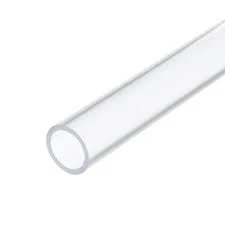Noy . 08, 2024 14:09 Back to list
Safety of Using Polypropylene Cutting Boards in Food Preparation
The Safety of Polypropylene Cutting Boards A Comprehensive Overview
In recent years, the culinary world has seen an increase in the use of diverse materials for cutting boards. Among these, polypropylene cutting boards have gained significant attention due to their safety, durability, and functionality. This article will delve into the safety of polypropylene cutting boards, examining their benefits, potential downsides, and how to use them correctly to ensure food safety.
What is Polypropylene?
Polypropylene is a versatile thermoplastic polymer used in a variety of applications, including packaging, textiles, automotive components, and household items. In the realm of kitchenware, polypropylene is favored for cutting boards due to its non-porous surface, which helps prevent the absorption of liquids and bacteria. This material is also lightweight, heat-resistant, and generally considered to be one of the safer options for food preparation.
Safety Features of Polypropylene Cutting Boards
1. Non-porous Surface One of the standout features of polypropylene cutting boards is their non-porous surface. Unlike wooden cutting boards, which can harbor bacteria in tiny crevices, polypropylene boards do not absorb moisture or food particles. This characteristic significantly reduces the risk of foodborne illnesses, making them safer for food preparation.
2. Mildly Antimicrobial Properties Some studies suggest that polypropylene may have mild antimicrobial properties, which can help inhibit bacterial growth on the surface of the board. While this does not replace the need for proper cleaning, it adds an additional layer of safety.
3. Dishwasher Safe Polypropylene cutting boards are typically dishwasher safe, allowing for easy and effective cleaning. High-temperature washing helps to eliminate bacteria that may remain after use. This is particularly advantageous during food preparation, as the board can be sanitized effortlessly.
4. Durability Polypropylene is resistant to cuts and scratches, which are common in cutting boards. This resilience means that the board maintains its integrity over time, regardless of frequent use. Additionally, it does not warp or crack easily, further enhancing its longevity.
Potential Downsides to Consider
While polypropylene cutting boards have many safety benefits, there are some considerations to keep in mind
polypropylene cutting board safe

1. Chemical Leaching In rare cases, when exposed to high temperatures or harsh detergents, polypropylene can potentially leach chemicals. However, this risk is low under normal cooking and cleaning conditions. To minimize any potential issues, avoid using abrasive cleaners or exposing the boards to extreme heat.
2. Color and Staining Polypropylene boards can stain, particularly when used with strongly colored foods like beets or turmeric. While staining does not impact safety, it may affect the aesthetic appeal of the board over time. Regular cleaning and treatment can help minimize this issue.
3. Not as Naturally Antibacterial as Wood While polypropylene may possess some antimicrobial properties, it does not have the same natural antibacterial effect that wooden cutting boards offer. This is not a significant concern if the board is regularly cleaned and maintained.
Best Practices for Using Polypropylene Cutting Boards
To maximize the safety and longevity of your polypropylene cutting boards, consider the following tips
1. Clean Thoroughly Always wash the board with hot, soapy water immediately after use. For an extra sanitizing step, you can also run it through the dishwasher or wipe it down with a solution of vinegar and water.
2. Avoid Extreme Heat To prevent potential leaching of chemicals, do not place hot pots and pans directly on the board. Use trivets or cooling racks instead.
3. Use Separate Boards For optimal food safety, consider having separate boards for different types of food—raw meat, vegetables, and cooked items—to prevent cross-contamination.
Conclusion
Polypropylene cutting boards are a safe, reliable choice for food preparation. Their non-porous nature, ease of cleaning, and durability make them an excellent addition to any kitchen. By following best practices for cleaning and usage, home cooks can ensure that their polypropylene boards remain safe and effective for years to come. As with any kitchen tool, understanding the advantages and limitations of polypropylene boards allows for informed choices in pursuit of both culinary excellence and food safety.
-
HDPE Natural Sheet: Durable, Food-Grade & Versatile Plastic Solutions
NewsAug.27,2025
-
Durable Glossy PVC Rigid Sheet | Premium High-Shine Panels
NewsAug.26,2025
-
Durable PP Rigid Sheet: Lightweight, Chemical Resistant Solutions
NewsAug.21,2025
-
PVC Grey Sheet for Extraction: Chemical Resistant & Durable
NewsAug.19,2025
-
Durable PVC Pipe Fittings for Plumbing & Irrigation Needs
NewsAug.18,2025
-
HDPE Steel Belt Reinforced Spiral Corrugated Pipe | High Strength
NewsAug.17,2025

